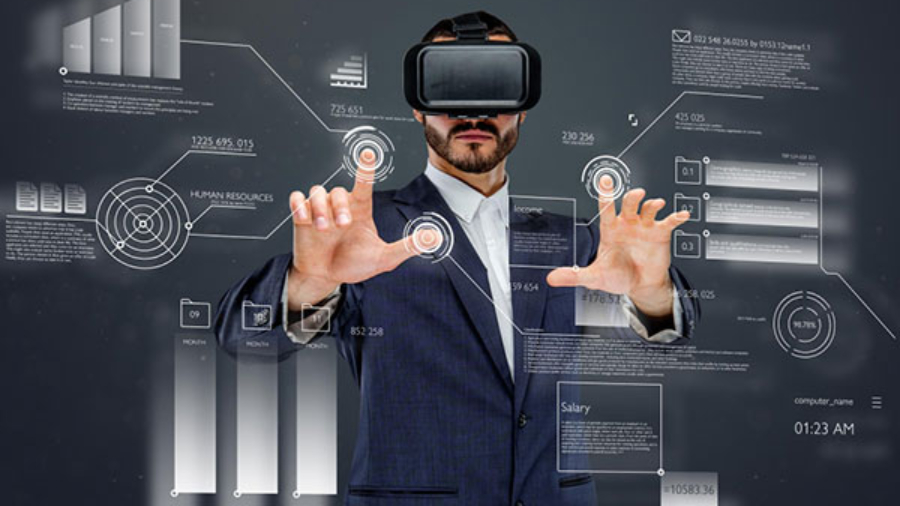IoT Opportunities In The Management Of Infectious Diseases
The Internet of things ( IoT) will help with an early warning system that curbs the spread of infectious diseases, which involves interconnected systems and advancement in data analytics, artificial intelligence, and omnipresent connectivities. India is the pioneer in IoT growth in Asia-Pacific, with Japan and India capturing the position by investing $50 billion on IoT by 2025.
The easy solution will be to jointly build a vast global set of devices for viral identification by businesses, communities, and national governments. It will also involve collective coordination and execution, which would tax the very fabric of democracy and force nations to place the world’s needs ahead of their citizens ‘ needs. The most sensible answer is often the hardest. It would undoubtedly be the biggest accomplishment in human history, given the amount of planning required to make that solution a reality.
Finding Drugs With IoT Devices
The first problem for us as a new pandemic happens whether medicine or vaccine is used to treat it. The world is hoping now for ways of slowing the spread of the coronavirus and finding an appropriate cure. Technology is making it possible to speed up the process. Through understanding the properties of the virus proteins and enabling medical researchers to review decades of related scientific papers at a faster rate, AI plays a significant role in proposing components of a vaccine.
In January, Google launched AlphaFold, a modern machine that anticipates the 3D protein composition refers to the genetic code. The University utilized a famous biology approach in Austin and the National Institutes of Health to draw up the first 3D map of the portion of the virus that connects living cells, the spike protein, and infect them.
So when will IoT become supported in the short term in a realistic way? Detection is the first step in managing infectious diseases. While it is unlikely that a global network of detectors will occur in the foreseeable future, India can deploy such coverage in the industry. India has a history of implementing IoT solutions across broad areas ( i.e., video surveillance) on an unprecedented scale. Why not just a virus smart grid, then? Few existing recording devices with face recognition and location to identify, trace, and monitor individuals for whom coronavirus may have a contract. An additional layer would also be used to track each person contacted by an infected patient. Though this is perhaps the most effective way to prevent highly infectious viruses from spreading exponentially in an environment that is becoming smaller daily with air travel, the use of IoT and AI can eventually sound like a police state for many people.
So what now?
Some possibilities and suggestions for the short and long term are provided to prevent the expansion of coronavirus. In a shorter time, any ‘compromised’ citizen continues to be monitored as customs travel through airports and/or borders crossings. Using AI sensors for guided quarantines and accelerated treatment to minimize coronavirus spread. Long-term, the UN, the WHO, and other international organizations may initiate an early diagnosis system to detect these viral infections, so as to gain global support from governments all around the world until they become global emergency situations. Global crises tend to produce global cost and increase stock price movements. The global society of detection can help to reduce price fluctuations and provide economies with incentives that respond rapidly to emergencies and epidemics of global health.
Tracking Faces Of People And Big Data
Big data processing can help classify, connect to, monitor who comes into contact with the infectious persons easily in the event of pandemic management.
Devices for face recognition, together with data, can correctly determine people even if masked. These technologies will lead to the tracking and surveillance of quarantined persons. This can also help keep track of people and see if they’ve been in contact with an infected person or not. CCTV cameras alongside the technology of facial recognition can help recognize infectious individuals who, while quarantined, breach the rules and move out.
Contactless Transport And Delivery By Individual Vehicles, Drones And Robots
>Self-driving cars, drones, robots can help everybody at a time when human contact is avoided. The movement of disabled people from and to health centers without placing safe individuals at risk can be achieved with automated vehicles. Robots may be used for the provision of milk, cooking equipment, sterilization, and street patrol. Drones may be used to provide food, track the population, transport test kits and medication to quarantine sites, identify people who have been infected with thermal imaging, spray disinfectants, etc. There are many new options and usage cases in which drones, robots, and self-supporting vehicles are used.
Drones and smart vehicles in China were used in the war against coronavirus.
Temperature Monitoring Supported By Technology
Wireless thermometer devices and facilities for similar infrared temperature calculations are the most critical medical instruments used at checkpoints at workplaces, airports, schools, clinics, train stations, restaurants, etc. These technologies help measure body temperature from time to time and are effective for detecting people who may require further research. The cycle is made quicker and more efficient by automatic thermal control along with face recognition.
Conclusion
Today, epidemics, a highly contaminating virus that can destroy and kill a lot of people, is its most significant danger of a worldwide tragedy. They now recognize that the clarity they have learned from the present COVID 19 scenario is that we have not been preparing for the pandemic. This ensuing pandemic is not about “if it happens,” but “when it can happen,” we must be personally and jointly trained to counter the epidemic in advance. Preparation is what we need.


